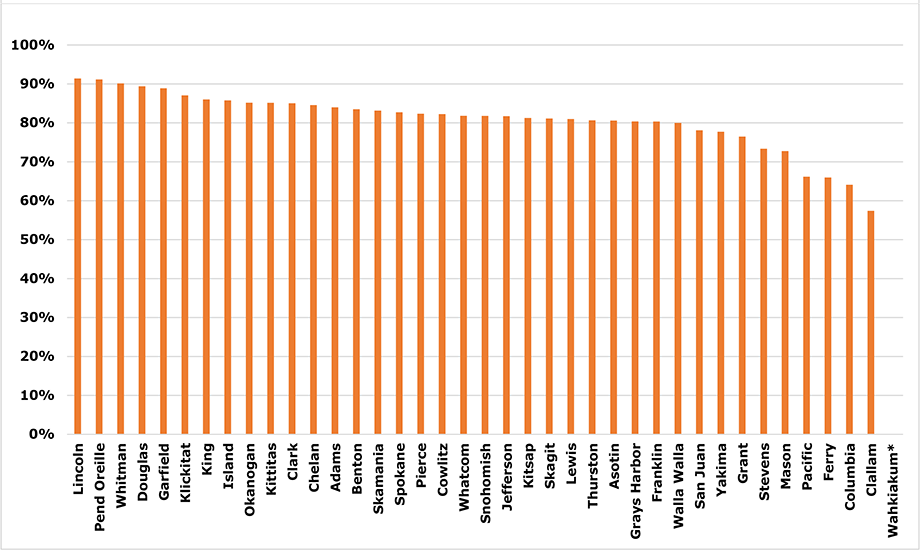
Teen Pregnancy in Washington State: A Comprehensive Analysis
Introduction
Teen pregnancy is a complex and multifaceted issue that has significant implications for both the young mothers and their children. In the United States, approximately 750,000 teenagers become pregnant each year, and Washington State is no exception. This article aims to provide a comprehensive analysis of teen pregnancy in Washington State, examining its prevalence, contributing factors, and potential consequences. By understanding the underlying causes and challenges associated with teen pregnancy, we can develop effective strategies to prevent and mitigate its negative impacts.
Prevalence and Trends
According to the Washington State Department of Health, the teen birth rate in Washington has declined in recent years. In 2020, the teen birth rate was 13.6 births per 1,000 females aged 15-19, down from 19.4 births per 1,000 in 2010. However, despite this decline, teen pregnancy remains a significant public health concern. In 2020, there were approximately 2,500 teen births in Washington State.
Contributing Factors
Teen pregnancy is often the result of a combination of factors, including:
- Lack of access to comprehensive sex education: Many teens lack access to age-appropriate and medically accurate sex education, which can lead to misconceptions about pregnancy and contraception.
- Poverty and economic instability: Teenagers living in poverty may have limited access to healthcare, including reproductive health services, and may be more likely to engage in risky sexual behaviors.
- Peer pressure and social norms: Teenagers who have friends or family members who have been pregnant may be more likely to believe that teen pregnancy is acceptable or even expected.
- Mental health issues: Teenagers with mental health problems, such as depression or anxiety, may be more likely to engage in risky sexual behaviors.
- Substance abuse: Teenagers who use alcohol or drugs may be more likely to engage in unprotected sex.
Consequences
Teen pregnancy can have significant consequences for both the young mothers and their children.
For young mothers:
- Educational attainment: Teen mothers are less likely to complete high school and pursue higher education.
- Economic instability: Teen mothers are more likely to live in poverty and experience financial hardship.
- Health risks: Teen mothers are at increased risk for health problems during pregnancy and childbirth, such as preeclampsia and premature birth.
- Mental health issues: Teen mothers are more likely to experience depression, anxiety, and other mental health problems.
For children of teen mothers:
- Health risks: Children of teen mothers are more likely to have low birth weight, developmental delays, and other health problems.
- Educational attainment: Children of teen mothers are less likely to succeed in school and achieve higher levels of education.
- Economic instability: Children of teen mothers are more likely to live in poverty and experience financial hardship.
Prevention and Intervention Strategies
Preventing teen pregnancy requires a comprehensive approach that addresses the underlying factors that contribute to it. Effective prevention strategies include:
- Comprehensive sex education: Providing teens with medically accurate and age-appropriate sex education can help them make informed decisions about their sexual health.
- Access to reproductive health services: Ensuring that teens have access to affordable and confidential reproductive health services, including contraception and abortion, can help prevent unintended pregnancies.
- Economic support: Providing economic support to teen parents can help them complete their education, find stable housing, and care for their children.
- Mental health services: Providing mental health services to teens can help them address underlying issues that may contribute to risky sexual behaviors.
- Community engagement: Engaging community organizations, schools, and families in teen pregnancy prevention efforts can help create a supportive environment for teens.
Conclusion
Teen pregnancy is a complex and multifaceted issue that has significant implications for both the young mothers and their children. In Washington State, the teen birth rate has declined in recent years, but teen pregnancy remains a public health concern. By understanding the underlying causes and challenges associated with teen pregnancy, we can develop effective strategies to prevent and mitigate its negative impacts. These strategies should focus on providing comprehensive sex education, access to reproductive health services, economic support, mental health services, and community engagement. By investing in teen pregnancy prevention, we can help young people reach their full potential and create a healthier future for our communities.